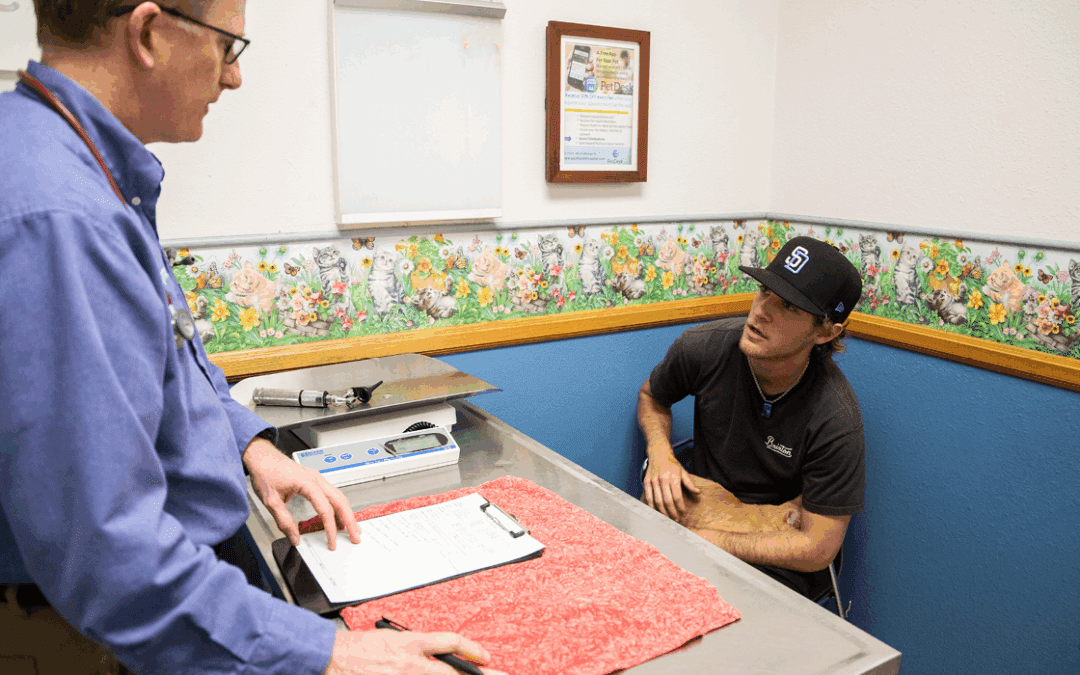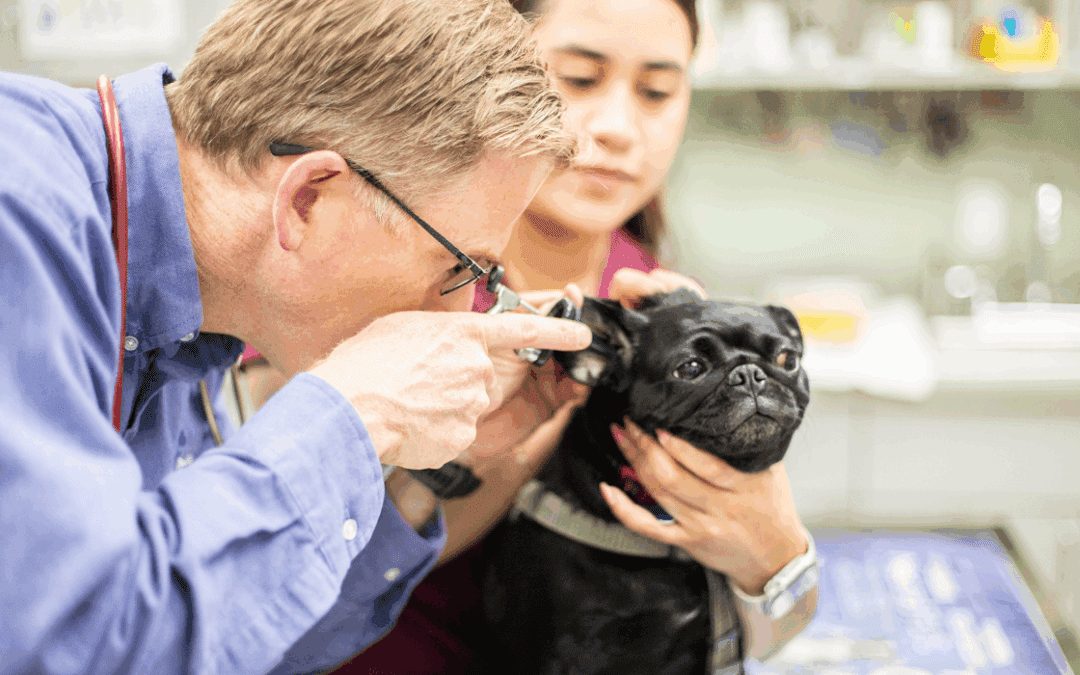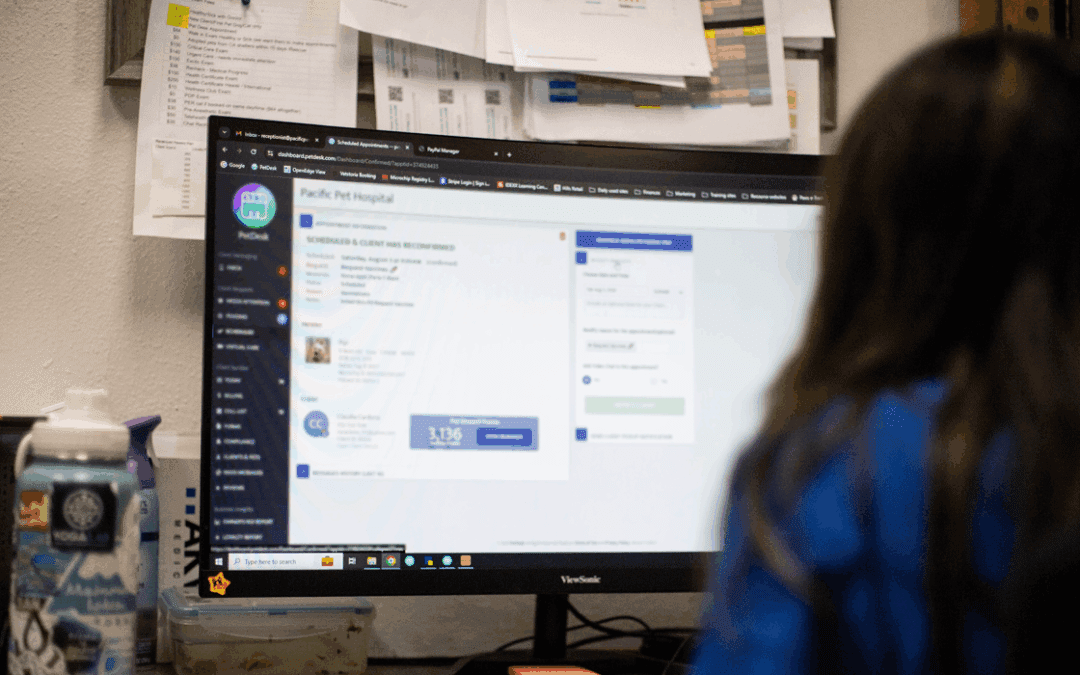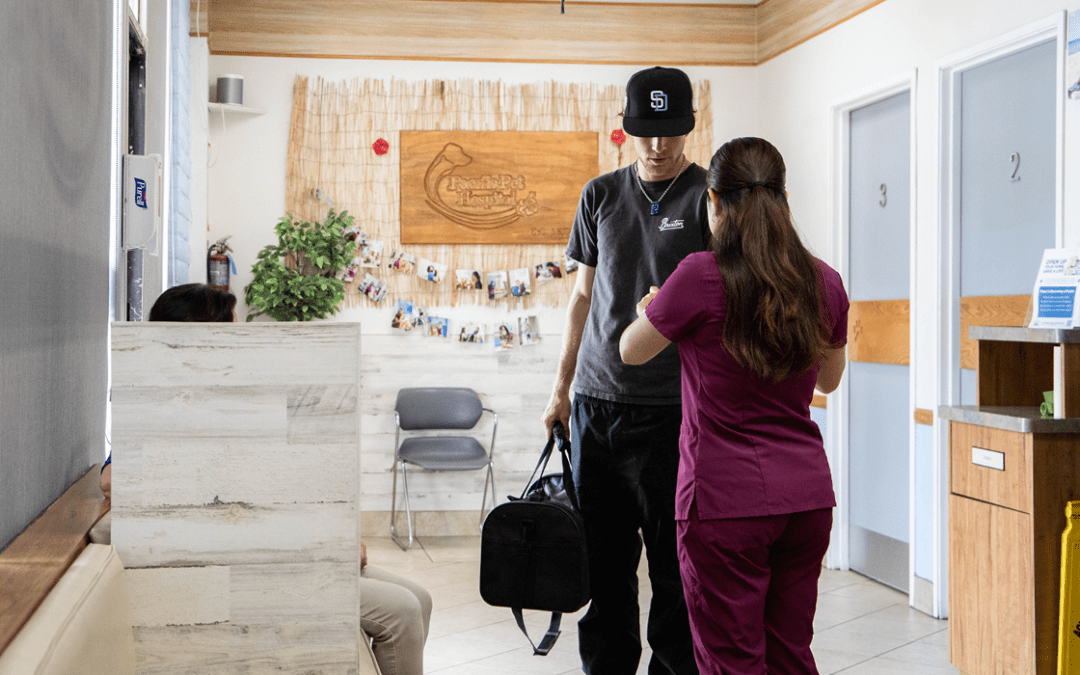If you’re looking for client communication software for your veterinary practice, you may have come across a couple of options in your research. Two of the most common options are a pet portal or a native mobile application.
The main difference between the pet portal and the native mobile application is that the pet portal is accessible from any device that has an internet browser, while the native mobile app is dedicated specifically to a smartphone.
With these options, how do you know which of these solutions are the right fit for your veterinary business?
In this article, we’ll break down the main features for both pet portals and native mobile applications, and the major differences between each so you can decide which is best for your practice.
Pet Portals
When the internet became more accessible to the general population in the early 2000’s, pet portals began to gain more traction within veterinary practices. These portals were designed like human health portals in which pet parents can access medical records, message doctors, and refill prescriptions online. Your account would be accessible from your veterinarian’s website or through a portal login.
This technology was a huge hit for pet parents who regularly took their pets to shows or to boarders or groomers. For most of these pet-centric events and businesses, having proof of up-to-date vaccinations are necessary. That’s why it was so convenient for pet parents to access that information on their own time, without having to call their veterinarian. The biggest draw for this portal was to book appointments online, without having to call into a clinic.
The ultimate goal of the pet portal was to empower pet parents with a tool to manage their pet’s health whenever they had internet access.
Native Mobile Apps
Native mobile apps are downloadable applications that are specifically designed for smartphones. This means that the function of the app pairs directly into the natural functions of the smartphone itself. Mobile applications that work natively can integrate with the phone or tablet to create push notifications and calendar reminders.
Applications that are non-native to the tool you’re using are usually websites dressed up to look like a mobile app without the convenience of integration. The functionalities of a non-native mobile application are similar to how they would be just using a web browser on your smartphone.
The ultimate goal of a native mobile app is to provide your clients with their pet’s information whenever your client has access to a smartphone.
What are the pros and cons of each platform?
Pet Portals
In the early 2000’s, the pet portal idea was incredibly popular. The concept itself was a great idea and many veterinary practices still use pet portals, but it didn’t connect quite as well with the pet parents. The challenge with the pet portal concept is that the portal is not something they use on a daily basis.
If your pet is healthy, you should be seeing your veterinarian at least once a year – which makes going and scheduling an appointment online somewhat challenging if you only log in to your portal once a year. While resetting the password for a portal isn’t that much of a disruption, going in and having to reset a password can ruin the user experience and become an inconvenience.
At that point, it’s faster for the client to just pick up the phone and make the appointment that way, which defeats the purpose of having an online appointment request through a pet portal.
Native Mobile Apps
With almost 77% of the US population owning a smartphone, you can guarantee that the majority of your veterinary clients have a smartphone. However, clinics do have clients who DO NOT have smartphones, so it’s important to consider them as well when choosing a client communication tool.
Another challenge that native mobile apps may have is getting your client base to download the app in the first place. To do this, it will require a good deal of marketing and pushing before you see a large adoption rate of your mobile app. The good news is once you do market your mobile app successfully, you’ll be able to reach your clients consistently.
The benefit of using a native mobile app is that you know that your clients will be paying attention to what’s on their phone. The average American adult spends 3 hours and 35 minutes per day on a mobile device – so it’s guaranteed that your clients are using the platform you’re communicating with them on.
How to Decide Which Solution Fits Your Clinic
Every clinic is unique and your clients have specific needs, but what needs are the most important for you to take care of? Consider your client’s needs and ask yourself a few questions that can help you decide:
- How many of your clients regularly use smartphones? If the answer is “the majority” of your clients, you might want to consider the option that creates a convenient experience for them. Also, think about the clients that don’t use smartphones – what is a way you can connect with them as well?
- How much time do your customer service representatives spend on the phone? Think about the things that your front desk staff have to do on a daily basis – how much of that is composed of calling clients for reminder appointments or confirmations? Solutions that offer online scheduling can help relieve your front desk staff from time-consuming reminder calls and still get clients confirmed and scheduled for appointments. This can free up more time for all those involved, including the doctors and managers so they don’t have to pick up the slack from crowded phone lines.
- How often do you receive requests from your clients regarding their pet’s information? If you frequently get calls from local groomers, boarders, or clients regarding a copy of their pet’s most recent vaccination history – giving your clients the ability to access this information on their own time can save your team a few minutes every day.
- Do you plan on reaching out to your clients regarding any announcements or promotions? If you’re looking to connect with your clients for a little more than just appointment reminders, you may want to consider a system that can help you reach out to as many clients as possible on a platform that they check regularly.
- How is your client compliance rate looking? Your client compliance rate is an important metric to keep track of – both for the health of your clients and the health of your business. If your compliance percentage is below average (below 10%), you may want to consider a solution that can help bring more clients into your clinic to stay up-to-date on vaccines.
Do you still need help deciding between a pet portal or a native mobile app?
Our practice management consultants can help you out!
See the power of PetDesk for yourself—for free
Save time and grow your business with custom websites and digital marketing, 24/7 error-free booking, a PIMS-VoIP phone system, plus a client engagement platform with a mobile app.






